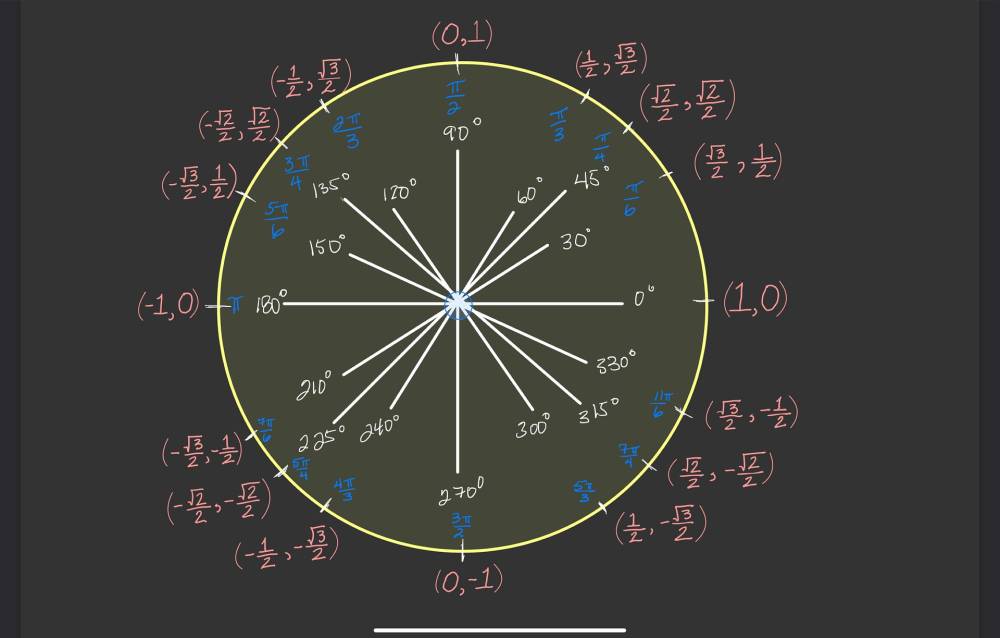Solving Trigonometric Equations Made Easy: A Comprehensive Guide for IB SL Math Students

Trigonometry is an important topic in IB SL Math, and one aspect of it that you will encounter is solving trigonometric equations. These equations involve one or more trigonometric functions, such as sine, cosine, and tangent, and typically require you to find the values of the angles that satisfy them.
In this blog post, we will discuss the process of solving trigonometric equations in IB SL Math.
1. Identify the Trigonometric Functions Involved
The first step in solving a trigonometric equation is to identify the functions involved. You may encounter equations that involve only one function or those that involve multiple functions. Make sure to identify all the functions and the angles they operate on.
2. Simplify the Equation
Once you have identified the functions, the next step is to simplify the equation as much as possible. Use the trigonometric identities and formulas to transform the equation into a more manageable form.
3. Solve for the Unknowns
After simplification, the equation will be in a form that you can solve for the unknowns. The unknowns will typically be the values of the angles that satisfy the equation. You may need to use algebraic techniques such as factoring, completing the square, or quadratic formula to solve for the unknowns.
4. Check the Solutions
Finally, you should check your solutions by substituting them back into the original equation. This will confirm that your solutions are indeed valid and satisfy the equation.
5. Consider the Domain and Range of the Functions
It's important to remember that the trigonometric functions have restricted domains and ranges. For example, the sine and cosine functions have a domain of all real numbers and a range of [-1,1]. On the other hand, the tangent function has a domain of all real numbers except for odd multiples of pi/2 and a range of all real numbers. When solving trigonometric equations, make sure that your solutions fall within the appropriate domain and range of the functions involved.
Let's consider an example of solving a trigonometric equation:
2sin(x) - 1 = cos(2x)
Step 1: Identify the functions involved - sine and cosine.
Step 2: Simplify the equation - we can use the identity cos(2x) = cos^2(x) - sin^2(x) to rewrite the equation as:
2sin(x) - 1 = cos^2(x) - sin^2(x)
Using the identity sin^2(x) + cos^2(x) = 1, we can simplify further:
2sin(x) - 1 = cos^2(x) - (1 - cos^2(x))
simplifying further gives:
3cos^2(x) - 2sin(x) - 1 = 0
Step 3: Solve for the unknowns - this equation can be solved using algebraic techniques such as factoring or quadratic formula. Using the quadratic formula, we get:
cos(x) = [2 ± sqrt(16 - 4*3*(-1))]/(2*3)
cos(x) = [2 ± sqrt(28)]/6
cos(x) = (1 ± sqrt(7))/3
Using the inverse cosine function, we get:
x = acos((1 ± sqrt(7))/3) + n*2*pi, where n is an integer.
Step 4: Check the solutions - substituting the solutions back into the original equation, we get:
2sin(acos((1 ± sqrt(7))/3) + n*2*pi) - 1 = cos(2*acos((1 ± sqrt(7))/3) + n*2*pi)
which is true for all integer values of n.
Step 5: Consider the domain and range - the cosine function has a domain of all real numbers and a range of [-1,1], so the solutions fall within the appropriate domain and range.
In conclusion, solving trigonometric equations in IB SL Math involves identifying the functions involved, simplifying the equation, solving for the unknowns, checking the solutions, and considering the domain and range of the functions. With practice and familiarity with the trigonometric identities and formulas, you will be able to solve more complex trigonometric equations.


